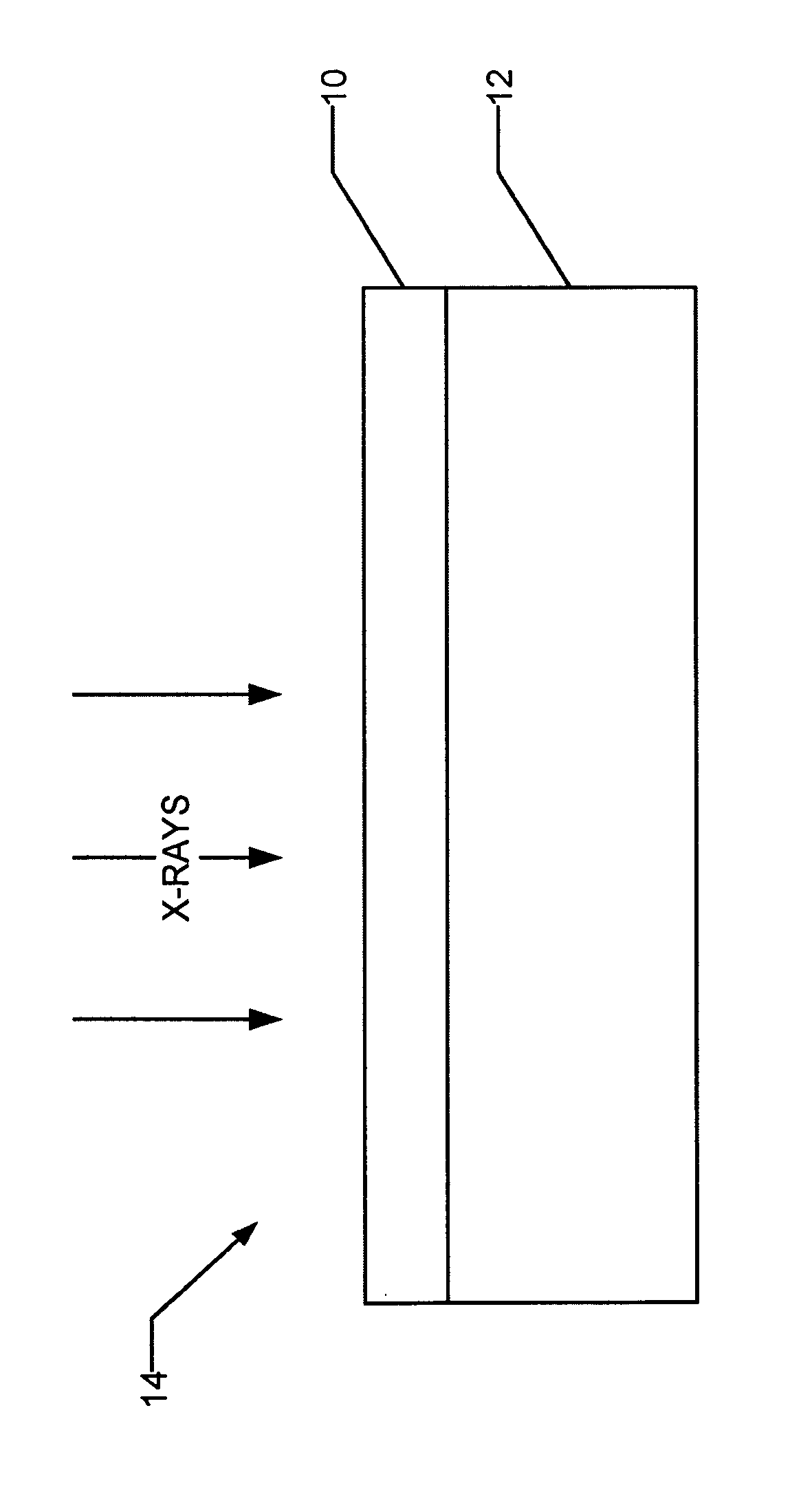Scintillator material and radiation detectors containing same
a radiation detector and material technology, applied in the field of scintillator materials, can solve the problems of reducing image resolution, difficult to predict the change of any individual scintillator, and difficult to implement quantitative correction measures
- Summary
- Abstract
- Description
- Claims
- Application Information
AI Technical Summary
Benefits of technology
Problems solved by technology
Method used
Image
Examples
Embodiment Construction
[0018] The terms “phosphor” and “scintillator” are used in an interchangeable way to mean a solid-state luminescent material that emits visible light in response to stimulation by high-energy radiation such as X, β, or γ radiation.
[0019] The term “high-energy radiation” means electromagnetic radiation having energy higher than that of ultraviolet radiation, including but not limited to, X radiation (also referred to as x ray radiation herein), gamma (γ) radiation, and beta (β) radiation. Solid-state scintillator materials are in common use as components of radiation detectors in apparatuses such as counters, image intensifiers, and computed tomography (“CT”) scanners.
[0020] The term “radiation damage” refers to the characteristic of a luminescent material in which the quantity of light emitted by the luminescent material in response to a given intensity of stimulating radiation changes after the material has been exposed to a high-energy radiation dose. The term “radiation damage”...
PUM
| Property | Measurement | Unit |
|---|---|---|
| temperature | aaaaa | aaaaa |
| temperature | aaaaa | aaaaa |
| time | aaaaa | aaaaa |
Abstract
Description
Claims
Application Information
 Login to View More
Login to View More - R&D
- Intellectual Property
- Life Sciences
- Materials
- Tech Scout
- Unparalleled Data Quality
- Higher Quality Content
- 60% Fewer Hallucinations
Browse by: Latest US Patents, China's latest patents, Technical Efficacy Thesaurus, Application Domain, Technology Topic, Popular Technical Reports.
© 2025 PatSnap. All rights reserved.Legal|Privacy policy|Modern Slavery Act Transparency Statement|Sitemap|About US| Contact US: help@patsnap.com

